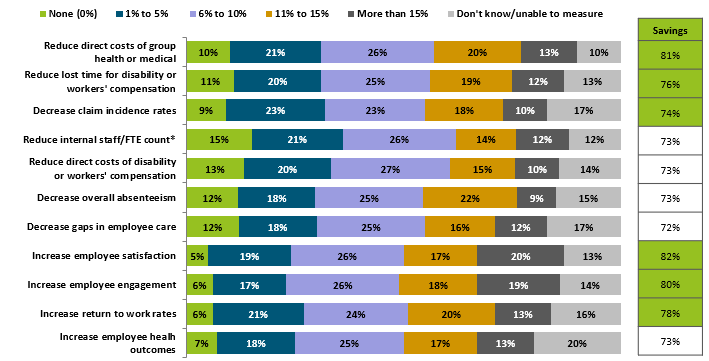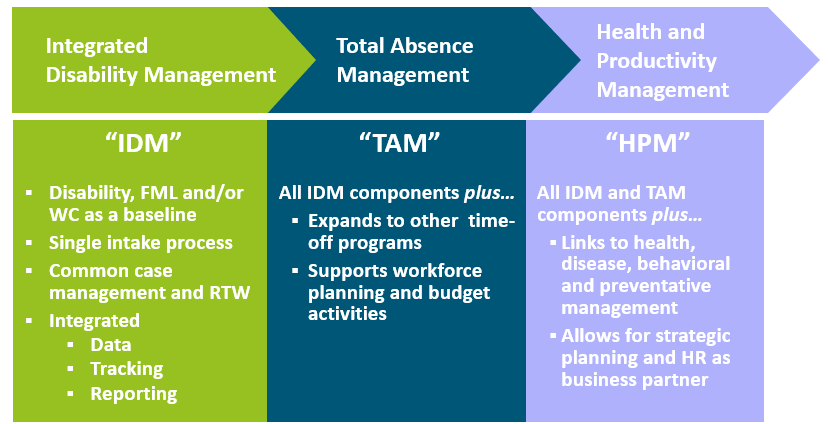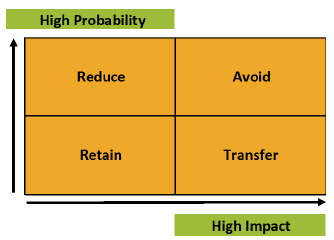Our Chief P&C Actuary, Peter Johnson was spotlighted in Captive International’s Captives Rising: Hard market brings new opportunities report. In which Peter how the pandemic has changed the risk management practices and what businesses should look out for. Check out the digital report here.
Check out this article by Captive International, where they spotlight Spring’s experience with captives and how we approach captive and risk optimization.
Our Senior Consulting Actuary, Peter Johnson has been selected for Business Insurance’s 2019 Break Out Awards! Check out this quick Q&A with Peter that gives insights into his background.
For employers with robust benefits programs in place, an integrated approach is continuing to become an increasingly popular way to take things to the next level, and for good reason. Although the concept is not new, and our team of experts has been developing solutions for years, certain aspects are getting employers’ attention.
Spring’s 2016 and 2018 employer surveys, led by Spring’s Senior Vice President Karen English, show that the core drivers to developing an integrated program are:
- Costs savings
- Simpler administration
- Upgraded employee experience
- Enhanced tracking capabilities
- Improved compliance
There’s a lot more impacting these areas than you might think, so let’s take a deeper dive.
Cost Savings:
Having an efficient benefits program with systems that speak to and work with each other can go a long way for your bottom line. Integration provides greater transparency into your workforce – absence management challenges, productivity, employee health – among other things. This knowledge is an opportunity to create a healthier, more present workforce.
If this sounds like qualitative “fluff”, it’s not. One healthcare client was able to save over $10M in direct and indirect costs through integration. These savings resulted from savings in the following areas:
- Workers’ compensation
- Disability
- Unplanned absence
- Vacation
- Other Leaves of Absence
Their program, done in tandem with captive insurance company funding, also yielded risk diversification and stability, as well as further savings of 10% of premiums.
The graph below shows the average levels of employer savings achieved by implementing an integrated program, spanning a range of direct and indirect cost categories.

Simpler Administration:
All parties benefit from an integrated benefits system. An immeasurable amount of time and effort is saved from not having to go to different platforms for critical information. This will speed up the claims process.
The best integrated programs send notifications and communications, and offer automated triggers, case management and documentation. For managers, results are easier to explain. For employees, access is simpler and more approachable. At the corporate level, you can expect faster turnaround time and greater visibility.
Upgraded Employee Experience:
Employees do not typically understand the nuances surrounding absences, nor the various policies, plans, and processes involved. They simply need time away. By integrating absence to include occupational and non-occupational events, your employees will experience:
- Fewer points of contact
- Clearer processes to follow
- Faster turnaround times
- Improved information access
- Increase self-service options
- Decreased confusion
These benefits lead to an enhanced employee experience including higher engagement, both at the organization and with their health. As all HR professionals know, engagement is critical for recruiting, retention and overall performance. Whether at risk or not, all employees will appreciate a smarter, more robust benefits program and an employer that is looking out for their wellbeing.
Enhanced Tracking Capabilities:
To make sustainable improvements, it is imperative to track your integrated program and mine the data across all absences to investigate patterns and draw predictions. An integrated program allows for metrics across plans and policies with drill-down features such as:
- Occupational vs. non-occupational
- Paid vs. unpaid
- Job protected vs. non job protected
- Return-to-work vs. stay-at-work
- Sick, vacation, etc.
- Self vs. family
- Continuous vs. intermittent
- Diagnosis specific
With all these different facets captured uniformly, you have reporting that is comprehensive; supports workforce planning and budget; allows for strategic planning with HR as a business partner; and offers opportunities for prevention; so that your organization can be proactive instead of reactive. These kinds of insights allow employers to move into population health management.
Improved Compliance:
With the hub of intelligence that an integrated program offers, employers have a more reliable way of remaining compliant when it comes to things like the ADA, FMLA and ERISA, as well as any state-specific regulations and policies unique to the company. Automation will make leave requests and absence tracking much easier to manage, and accurate documentation will aid accountability for employers and employees alike.
Ultimately, an integrated workers’ compensation and disability program can have significant positive impact on a company and its employees, especially for larger employers. We have seen great, quantifiable success with integrated programs from our clients. If you are thinking that this process seems too big a task to take on, don’t worry. Any company can start at any point along the continuum shown below, and gradually work their way to a model that facilitates population health management in the workforce.
Most Common Approach is Phased

Our Managing Partner, Karin Landry was quoted in Business Insurance’s article on ways employers can offer effective worker’s comp while still reducing costs. Check out the full piece here.
You’ve had your P&C captive for years and it has continued to perform well throughout. So, what next? How do you capitalize on this success and build on your captive or rebuild an underperforming aspect of it? One word: Refeasibility. Okay, so ‘refeasibility’ isn’t really a word (according to Oxford Dictionary). At least it hasn’t been traditionally, but it is one that needs to be on the tip of the tongue of every captive owner. It is a word that has become somewhat synonymous with captive optimization and very accurately describes what captive owners need todo with an older captive: conduct a new (re)feasibility study.
The Importance of Refeasibility
As with all other business matters, your company’s captive needs and goals are likely to change over time, especially with new and emerging risks sprouting up frequently. Much like your family car, a captive should have a check up on a periodic basis. As a captive matures and companies evolve, captives need to be re-examined to determine if changes should be made to align with current organizational needs. Key reasons for this re-examination include the following:
- Positive or negative experience
- Example: unexpected adverse loss experience, such as supply chain interruption, resulting in business income loss not covered by insurance
- Surplus release or addition
- Example: surplus growth for the captive has been good and, as a result, there is now opportunity to add/expand coverages insured in the captive
- Opportunities to add new lines of coverage (that perhaps didn’t exist or weren’t relevant before)
- Example: Employee benefits or cyber risk
- Change in the risk profile of various risks
- Example: Litigiousness is on the rise in the insured’s industry and additional protection is needed
- Changes in the regulatory environment
- Generally speaking, regulatory changes have impacted business directly or indirectly, resulting in loss of revenue. This is a leading concern for small business owners.
- Changes in law (such as those resulting from case law outcomes like the recent Commissioner vs. Avrahami case)
To address all these potential changes, our Spring CARE (Captive Analytical Risk Evaluation) team recommends a captive evaluate its risk appetite and risk exposure at least every five years. Are you still writing the right lines in your captive? Are you still in the right domicile? Would a different structure be more profitable? Would other service providers make a difference? Have your claims changed significantly? Have regulations changed over the years? All this and more can be answered with a good review of your captive by a professional consultant.
Captive optimization starts with a captive refeasibility study. Every refeasibility study is different to varying degrees; the scope and resources required to conduct the study are dependent on the captive’s current structure, the events (if any) that triggered the study and the goals of the company. That said, through our Spring CARE system, we follow a carefully-constructed evaluation structure when our team works through the process of evaluating captive client’s existing captive. Generally speaking, we follow and recommend the following process in conducting a refeasabiity study, starting with goals and ending with measurement.
Goals Stage
In this initial stage, it is important to focus on confirming the goals and objectives of your captive, both new and old. Have the older goals been achieved? How have the goals changed over the years? This is acritical step in laying the groundwork and direction of your refeasibility project. Also critical at this early point is the collection of data. We consider the data to be collected here as not only the stats and facts of the captive, but also the more subjective (non-paper) data that can be gleaned through management interviews and informal stakeholder surveys. Finally, in any good refeasibility study, it is very important to identify changes in your risk profile. The risk matrix to the right shows the four classic actions a company can use to handle each of their risks (DeLoach 2000).

Typically, high probability or high impact risks should be considered for insuring in your captive. Some of the most common risks to insure in captives are listed below . Emerging risks should also be considering in this assessment. For example, A new technology like driverless cars will create both risk and/or opportunities across various industries.
Coverages commonly written into captives:
| Employee Benefits Risk | Property & Casualty Risks |
| AD&D | Auto Liability |
| Life/Loss of Key Employee | Business Interruption |
| Long-Term Disability | Directors & Officers Liability |
| Medical Stop-Loss | General Liability |
| Voluntary Benefits | Professional Liablity |
| Retiree Benefits | Property (deductible or excess layer) |
| Pension Buy-Outs/Buy-Ins | Trade Credit |
| Workers’ Compensation | |
| Commercial Policy Excluded Risk |
Impact Stage
You want to be sure you have a clear idea of what you’re looking to accomplish, and to what extent. The Impact Stage of a refeasibility study involves looking at all the different pieces of t he captive puzzle to determine how they would be affected by the changes you’re considering. A few activities that a professional captive optimizer would look to accomplish in this phase would be:
- Conducting an analysis of your risk financing optimization
- Reviewing your current reinsurance levels and optimizing your reinsurance use
- Stress testing of the captive with reasonable adverse case outcomes

Strategies Stage
It’s important to outline the methods you plan on utilizing in your captive refresh; in this Strategies Phase, a professional captive optimizer would first analyze any additional lines of coverage that could be insured by your captive.
Secondly, a surplus management strategy would be developed. There are various considerations in appropriately managing the capital and surplus levels over the life of a captive, including average cost of capital, retention levels, reinsurance use, taxes and a number of others that a team of actuaries and consultants would review and develop strategy to address.
Structure Stage
Now that you know what you want to do and how, it’s time to take a closer look at how it will all work together in a logical structure. Market changes should give you some food for thought. For example, pure captives are increasingly changing to sponsored entities. In this Structure Stage, it is important to identify investment management best practices as well as the optimal collateral structure.
Measurement
Finally, all sound captive projects end with measurement. This is the time to collect new data and determine to what extent goals were met, and impacts made. A great deal of this stage relies on the creation of solid industry benchmarks to measure current and future captive performance against. It is also important in the Measurement Stage for the optimization team to develop implementation plans based on their findings and make actionable recommendations for helping you achieve the goals that were established in the first phase of this project. At the conclusion of the measurement phase, a professional captive optimization team, such as our Spring CARE team, would produce a refeasibility report for your captive. In this report, all of the findings of the refeasibility study are outlined and reviews along with the recommendations developed in this phase. These findings can serve as a base line for measurement.

Conclusion
Regardless of how old or new your captive is, there are a number of internal and external factors that have changed since it was created. With all the changes taking place in the industry, it is a great time to have a professional come in and not only take a snapshot of how your captive is currently performing, but also help you project and strategize where your captive should be in the future. Now is a great time for a captive refeasibility study.